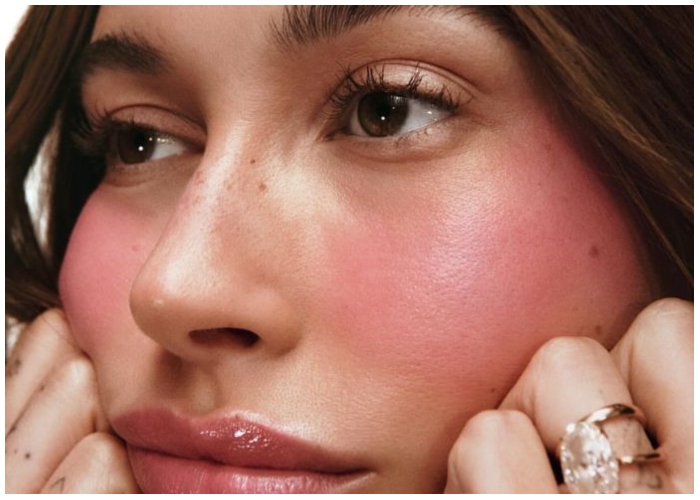Beauty trends always come back around, but 2025 has taken the cycle somewhere unexpected. Gen Z isn’t just reviving past trends—they’re breathing life into styles that were once widely mocked, rejected, or labeled outright “ugly.” From overlined lips to clashing colors and glitter tears, the rules of what’s attractive have been thoroughly upended. What millennials once abandoned in favor of polish and perfection, Gen Z now embraces as expressive, defiant, and refreshingly weird. This isn’t just nostalgia—it’s rebellion. And it’s changing the definition of beauty from something you conform to into something you create yourself.
The Thin Brow Rebellion
After years of growing out overplucked brows and investing in microblading to “fix” past mistakes, millennials are watching in disbelief as Gen Z revives the thin eyebrow trend with pride. But this time, it’s different. Thin brows aren’t a default—they’re a declaration. They say you’re not interested in face symmetry, Instagram trends, or Gen Alpha’s soap-brow obsession. You’re here to provoke, not to please.
Glitter, Stickers, and Eye Art
Millennials were all about soft glam—think smoky nudes, neutral mattes, and subtle shimmer. But Gen Z is putting literal stickers on their faces and calling it a look. Eye makeup is now theatrical, experimental, and intentionally unwearable by past standards. Rhinestones, neon liner, bold shapes, and childlike doodles are everyday beauty choices. This kind of chaos doesn’t hide behind filters—it posts proudly, glitter fallout and all.
Loud Blush and Unblended Color
Contouring was once king, but today’s makeup routines involve bright, sweeping blush in shades of coral, violet, or wine—often placed high on the temples and not fully blended on purpose.

The result feels editorial and raw, as if someone dipped a paintbrush and went for it. This new blush trend rejects sculpting for storytelling, saying more about mood than bone structure.
Retro Hair Mistakes as Statements
Crimped waves, butterfly clips, visible roots, and messy buns with spiky ends were once things to grow out of—but Gen Z is embracing them like badges of honor. These Y2K styles aren’t about irony alone; they’re about reclaiming looks that were once considered too childish, too tacky, or too wrong to wear in adulthood. Now, they’re nostalgic armor against conformity.
Purposefully Clunky Nails
Minimal nails in beige or pale pink are out. What’s in? Layered, long, and loud nail art that includes charms, beads, 3D elements, and five different designs on one hand. These nails don’t pretend to be practical—they’re sculptural, excessive, and impossible to ignore. Nail art has become the outfit, and subtlety is no longer the goal.
Lip Liner and the ‘Chola’ Revival
The classic dark liner with pale lipstick combo is back on beauty feeds, and it’s not just about aesthetics—it’s cultural reclamation. Gen Z is acknowledging and honoring the Latinx and Chola roots of this bold look, bringing visibility to styles that were once dismissed as “too urban” or “unprofessional.” What millennials were taught to avoid, this generation wears as tribute and pride.
The Embrace of Visible Texture
The influencer era told us to conceal everything—pores, redness, fine lines, acne, and uneven tones. Gen Z is saying no. Skin is meant to look like skin, and beauty now means showing your real face, not erasing it. Texture is celebrated in close-up selfies, freckles are enhanced instead of covered, and skincare isn’t about transformation—it’s about coexistence.
Nontraditional Color Palettes
Gone are the curated neutral palettes once used to play it safe. Today’s beauty kits include mustard eyeshadows, silver lips, green highlighters, and intentionally clashing combinations. These shades may not look “flattering,” but they look expressive. It’s about art, experimentation, and building a visual identity that doesn’t cater to anyone else’s rules.
The Politics of Pretty
For many in Gen Z, beauty is no longer about being desirable in a mainstream sense. Pretty can feel like a cage—an obligation to appear soft, feminine, and agreeable. Ugly beauty breaks free from that pressure. It allows people to look sharp, messy, intimidating, and even bizarre. It’s power through visual disruption, and that makes it beautiful in a different way.
Identity Over Instagram
While millennials built their beauty culture around curated perfection and brand aesthetics, Gen Z thrives on individuality. TikTok, not Instagram, is the hub—and it rewards authenticity, humor, and risk-taking. You don’t need matching tones or flattering filters to go viral. You need something that feels real, even if it looks “off.”
A New Standard: No Standard
What makes this movement powerful is that it refuses to set a new bar. There’s no template, no correct look to copy. Ugly beauty doesn’t replace old trends—it abolishes the need for any trend at all. It’s freeing, a little weird, and wildly unpredictable. But most importantly, it’s a reminder that beauty should never be boring.